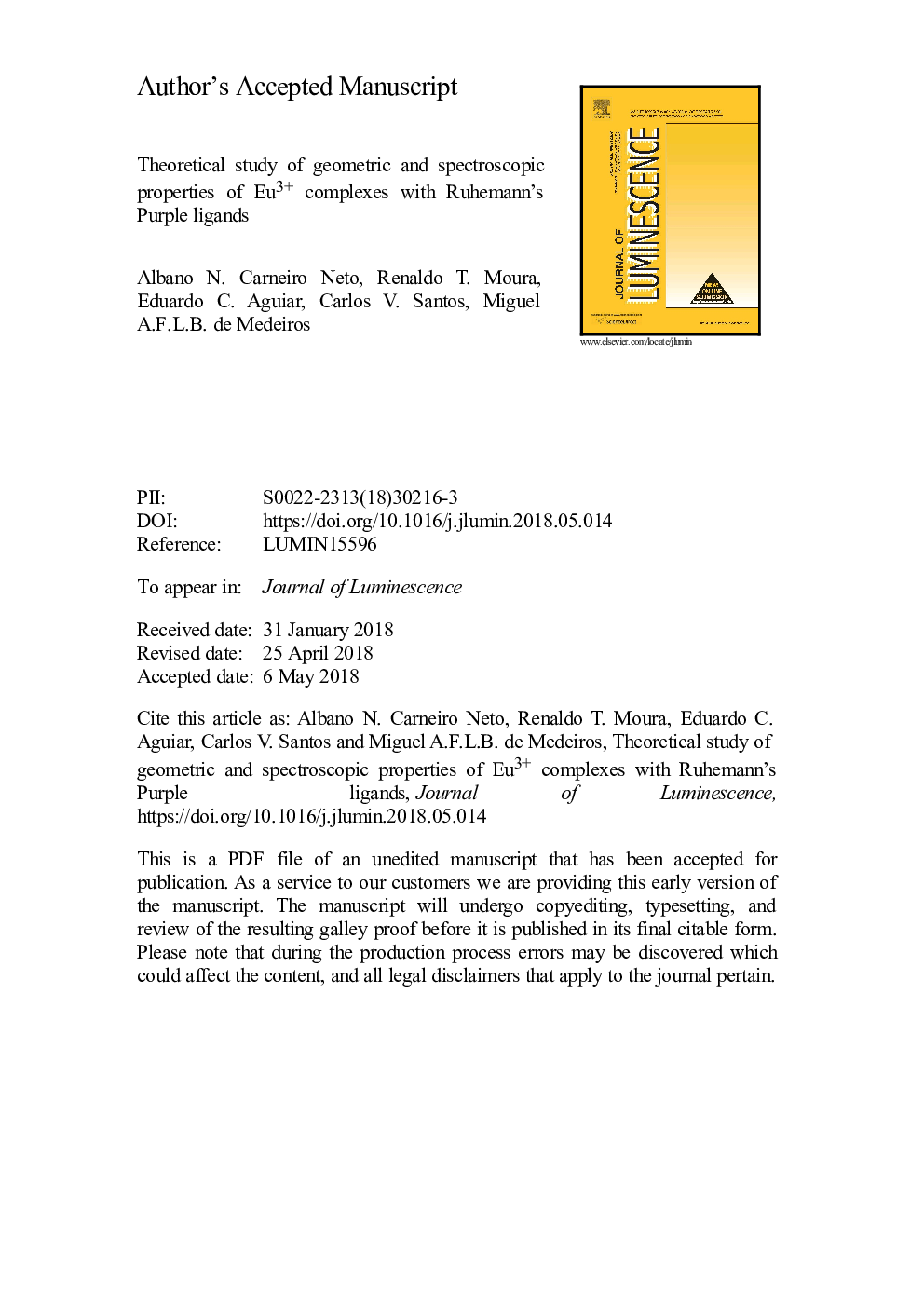| Article ID | Journal | Published Year | Pages | File Type |
|---|---|---|---|---|
| 7840048 | Journal of Luminescence | 2018 | 23 Pages |
Abstract
The present work aims to report the theoretical study on the geometry and spectroscopy of different Ruhemann's Purple (RP) isomers and the spectroscopic study on different [Eu(RP)2(H2O)Y-X(Cl)X] coordination compounds, where Y =â¯2 or 3 and Xâ¯=â¯0, 1, 2 and 3 (for Y = 3). Density functional theory (DFT) calculations were performed to examine the coordination energies, solvent effects and theoretical intensity parameters using B3LYP/MWB52/6â311++G(d,p) level of theory. Examination of the RP isomers geometries, tilt angles, relative coordination energies and excitation spectra indicate that the deprotonated RP is more suitable to coordinate with a lanthanide ion. The inclusion of solvent effects causes a blue shift in all theoretical excitation spectra, being crucial for a better description of the electronic situations of RP isomers and coordination compounds. The DFT calculations indicated that the probable coordination modes of the studied compounds have a distorted D2d symmetry. In addition, there is the participation of chlorides in the composition of the first coordination sphere, a fact that was neglected by many authors. The values of the theoretical intensity parameters were obtained with acceptable values of αâ², αOP and g. These Ωλ parameters are in excellent agreement with that obtained experimentally in the literature. With all the theoretical data, two structures can be assigned to the Eu3+ complex with RP: [Eu(RP)2Cl2]- (coordination number = 8) and [Eu(RP)2(H2O)Cl2]- (coordination number = 9).
Related Topics
Physical Sciences and Engineering
Chemistry
Physical and Theoretical Chemistry
Authors
Albano N. Carneiro Neto, Renaldo T. Jr, Eduardo C. Aguiar, Carlos V. Jr, Miguel A.F.L.B. de Medeiros,
